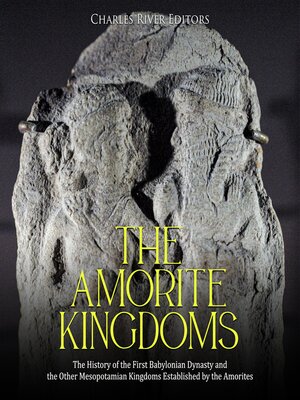The Amorite Kingdoms
audiobook (Unabridged) ∣ The History of the First Babylonian Dynasty and the Other Mesopotamian Kingdoms Established by the Amorites
By Charles River Editors

Sign up to save your library
With an OverDrive account, you can save your favorite libraries for at-a-glance information about availability. Find out more about OverDrive accounts.
Find this title in Libby, the library reading app by OverDrive.



Search for a digital library with this title
Title found at these libraries:
| Loading... |
As the Canaanites established themselves in most of the Levant and the Hurrians carved out space for themselves in northwestern Syria, a West Semitic ethnic group known as the Amorites entered Mesopotamia and Syria from the Arabian Desert. The movement of the Amorites and Hurrians coincided with the collapse of the Ur III Dynasty after 2004 BCE (Haywood 2005, 28), although it is not known for sure if the collapse of Ur III led to the movement of peoples, or if the movement at least partially led to the collapse. As the Ur III Dynasty grew weak internally, it could be that the Amorite attacks were a major factor in the destruction of the state. It must be stated, though, that it was the Elamites who ultimately delivered the coup de grace that brought Ur III to its knees. The more likely scenario is that the Amorites simply took advantage of the power vacuum that was created when Ur III collapsed.
The Amorites actually belonged to several sub-tribes and did not necessarily move in unison, but they did migrate in such large numbers that they were able to overwhelm much of Mesopotamia and northeastern Syria by about 1800 BCE. All of the notable political dynasties and city-states from this period – Babylon, Mari, Assyria, Eshnunna, and Yamhad – were established by ethnic Amorites, although only traces of the Amorite identity were retained. The Amorites accepted standard Mesopotamian and Syrian religious practices, utilized the Akkadian language and the cuneiform writing style extensively, and built monumental architecture based on the Sumerian and Akkadian styles. Some bands of Amorites did in fact retain their semi-nomadic lifestyle, but they often found their former kinsmen were not so tolerant of their wandering traditions. Some of the early sedentary Amorites used the still semi-nomadic Amorites as mercenaries in their armies, but they also often fought them and did whatever they could to keep them out of their boundaries.






